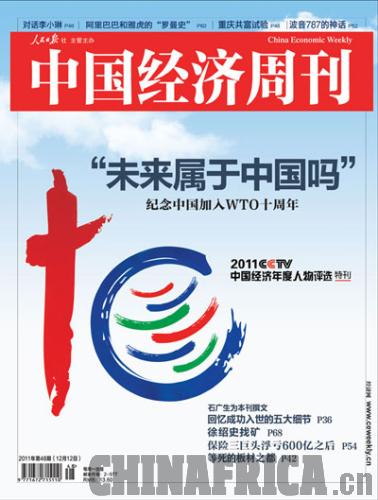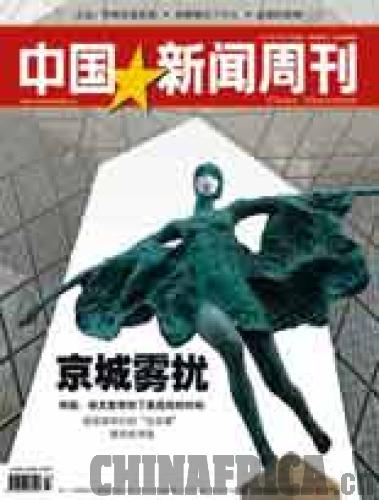| 
TEN YEARS IN WTO
China Economic Weekly
December 12, 2011
Since China joined the World Trade Organization (WTO) in 2001, it has managed to deal with hundreds of challenges and achieved great economic progress, while also benefiting the world economy.
In this issue, China Economic Weekly reviews the process of China joining the WTO and its economic achievements during the past 10 years. Being recognized as a member of the organization is the result of a laborious negotiation, symbolizing China's transformation from a nation with self-imposed isolation from the outside world to one who positively participates in international competition.
Joining the WTO has hastened the move toward a market economy. It also created a favorable international environment for China's economic development. However, challenges still exist. Economic globalization demands China adjust the relation between the government and market and improve the government administration. Enterprises are also facing more fierce competition.

AIR POLLUTION
China News Week
December 19, 2011
The fog and haze in the winter of 2011 has introduced the public to the term particulate matter, also known as particle pollution or PM 2.5, the pollutant that caused the choking air.
In this issue, the magazine looks at where the pollutant comes from. According to He Kebin, Professor of School of Environment of Tsinghua University, there are three main sources for PM 2.5, industrial pollution, soot and emission from automobiles. In Beijing, the first source is controlled and the latter two, especially the emission from automobiles, are the major contributors of the city's polluted weather.
Meanwhile, industrial pollution from nearby provinces float over to Beijing, worsening the capital's pollution situation. As driving is an individual choice and pollution from nearby provinces cannot be controlled by Beijing's local government, it becomes more difficult to control the air quality, according to the magazine.
COLLEGE SUBJECT CRITERIA
Guangming Daily
December 8, 2011
The Education Ministry of China recently published the result of a study on college graduate employment. According to the study, colleges are not vocational or technical schools, and thus employment rates should not be used as the only guideline for designing college subjects.
It's understandable for the ministry to previously suggest a direct link between the employment rate and college curriculum. But, deciding on a list of subjects solely by referring to the employment rate seems somewhat unreasonable. If subjects that result in low employment rates are all cut, it will lead to the disappearance of humanities and basic science subjects in key universities, making it impossible for some key scientific research to continue.

GREENER PASTURES
Xinmin Weekly
December 5, 2011
About 14 percent of China's rich have either emmigrated from China or have applied for emmigration according to a paper jointly released by the Hurun Report and the Bank of China. The revelation has caused widespread discussion.
Based on interviews, the magazine concludes that the motivation for this emmigration trend is to provide children with better education, improve living standards and get more profitable business opportunities.
Hu Run said when entrepreneurs accumulate enough capital, they will be drawn to the international market in search of more opportunities.
STUDENTS NEED SLEEP
Xi'an Evening News
December 13, 2011
Growing evidence shows that 80 percent of primary and middle school students in China lack sleep.
According to the Guide of Health Education in Primary and Middle Schools issued by the Education Ministry, primary school students should sleep 10 hours a day, junior and senior middle school students should sleep at least 9 and 8 hours a day. However, the China Youth & Children Research Center's survey in 2010 showed that students' actual sleep time is much less.
The importance of relieving children from heavy academic burdens is obvious, but despite repeated calls from education departments to reduce pressure on students, schools will never capitulate when it comes to filling their high school quotas. Thus, the key is not overloading students with work, but a new education performance measurement mechanism to tangibly liberate children from academic pressure. |